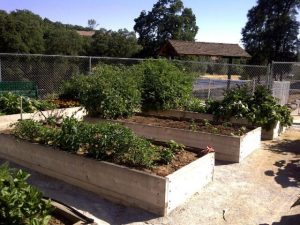History has it that the tomato started in Central America as a two-chambered wild tomato. The wild plant was developed by the Mayans, the Aztecs, and farmers in Central America. They grew out the wild variety into the larger, uneven, multi-lobed tomato that we now know. In the 1520’s the Spanish brought back tomatoes to the Spanish empire and Asia. Either the Spanish or the British brought the tomato to the southern states with the Carolinas growing them in the middle of the eighteenth century.
In the nineteenth century tomatoes were spread across America. That does not mean people were eating them. On the contrary, tomatoes were considered poisonous and disgusting. These opinions were probably based on how all vegetables were prepared, by washing them in polluted water. Polluted water and the summer illnesses became the blame from eating vegetables. Vegetables were not popular with everyone, not just little kids. Finally, in 1834 the health benefits and acquired tastes became favorable for tomatoes. Tomato seeds were being sold in seed catalogs throughout the country. Seed companies started developing new varieties to even out the sales by using earlier ripening varieties. That created a full season of sales, not just a price-reducing glut at the end of the growing year.
Tomatoes today are all sizes and colors. The sizes available today go from the size of a pea to the size of a grapefruit, a three-pound grapefruit. Different sizes fulfill different needs. Cherry tomatoes, the smallest sizes, are perfect for salads, omelets, kebobs, and snacking. Medium size round tomatoes will make canning easier. Oblong, meaty tomatoes with less moisture are perfect for sauces, paste, or salsa. Large tomatoes, referred to as slicing tomatoes, are your hamburger’s best friend.
Tomato colors have grown from only the round, red globes. Colors today include red, pink, black, purple, orange, yellow, green, yellow white, swirls, and stripes. For a tomato to achieve a color the skin and the flesh combine to reach the color you see. When sliced, the tomato could take another color completely.
When deciding on which tomato to grow it helps to decipher the tag. There are two ways that tomatoes grow, determinate and indeterminate. Determinate tomatoes grow to a particular height then stop, putting on a majority of the fruit all at once. Indeterminate continues to grow and will produce tomatoes along the branches throughout the growing season.
On the tag you will notice capital letters after the tomato variety name. Those letters will designate the tomato’s resistance to a particular disease. Tomatoes will be the most productive with the ability to internally fight these diseases, many that wipe out an entire crop.
- V Verticillium Wilt
- F Fusarium Wilt
- N Nematodes
- ASC Alternaria Stem Canker
- TMV Tobacco Mosaic Virus
- ST Stemphylium (Grey leaf spot)
- SWV Tomato Spotted Wilt Virus
- LB Late Blight
Many tomatoes will carry the VFN designation unless they are heirlooms. Heirlooms are any tomato that is at least 50 years old and not a hybrid. A hybrid tomato has been grown by crossing varieties to improve traits, making them stronger, more disease resistant and better producers.
Sun Gold is called the sweetest tomato available now. The favorite Early-Red is Early Girl with a time element of 54 days. Main-Crop Red has medium to large fruit and several candidates for top of the list; Celebrity, Fantastic, Better Boy, and Ace. Extra-Large Red seems to have the same two names pop up frequently, Beefsteak and Beefmaster. Best bet is to grow what you like and need. Then add a new variety every year just for fun.
The flavor of home-grown tomatoes makes the efforts to plant and grow them seem minor. Summer for many people just does not start until that first hamburger with a slab of tomato right out of the garden.
Written by Julie Silva, a University of California Cooperative Extension Master Gardener of Tuolumne County.
UCCE Master Gardeners of Tuolumne and Calaveras Counties can answer home gardening questions. Call 209-533-5912 or go to: http://ucanr.edu/survey/survey.cfm?surveynumber=7269 to fill out our easy-to-use problem questionnaire. Check out our website at: http://cecentralsierra.ucanr.edu/Master_Gardeners/ You can also find us on Facebook.

